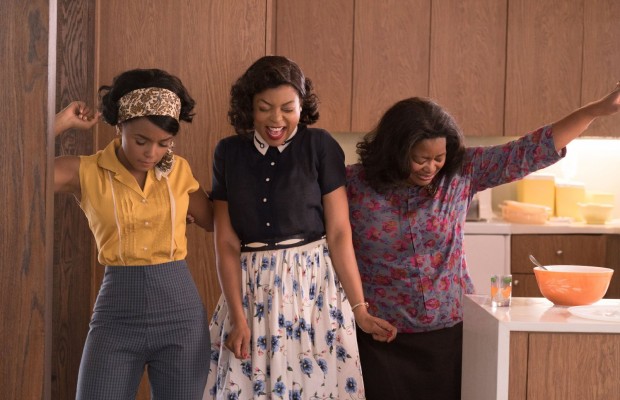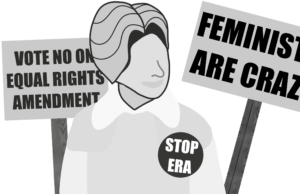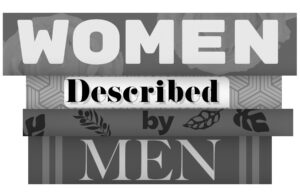“Hidden Figures” promotes representation in the film industry

Turning a dramatic story of American history into a fun and family friendly movie, while still bringing to light major social issues in America then and now, “Hidden Figures” deservedly rose to the top of the box office on Martin Luther King Jr. Weekend.
The movie tells the long unknown story of Katherine Johnson (Taraji Henson), Mary Jackson (Janelle Monae), and Dorothy Vaughan (Octavia Spencer), three African-American women who worked for NASA during the Space Race. The women fight against racism and sexism in the workplace, dedicated to using their talents to help put a man into orbit around the earth.
I could go on for hours about the bright and beautiful cinematography, the incredible acting of all three women, the upbeat music that makes you want to dance in your seat, or the wonderful integration of humor into the otherwise serious film, but this is not a review. This is why “Hidden Figures” matters.
“Hidden Figures” beautifully and fiercely attacked the racist and sexist beliefs that restricted America just 50 years ago. However, the timing of the films release could not have been better, as it is impossible to watch “Hidden Figures” without realizing how these xenophobic ideologies and practices are not a thing of the past, but in fact still persist today.
In addition to addressing racism and sexism, “Hidden Figures” does the unthinkable and shows women who are mathematicians and engineers. The stigma that women can not study and be successful in science, technology, engineering, and mathematics (STEM) is one that has held back brilliant and talented women throughout history. While now more women are finding careers in STEM, normalizing the idea of female engineers and scientists is still incredibly necessary. In order to fight sexism that continues to make women hesitant about pursuing STEM, we must have movies like “Hidden Figures” that show women dominating these fields.
Everyone has heard the line from the trailer, when Jackson is asked if she would wish to be an engineer if she were a white man, and she says “I wouldn’t have to, I’d already be one.” However, the entire film is peppered with gems like this that highlight the extreme racism and sexism these women faced. For example, when Johnson is forced to explain to her coworkers that she has to run half a mile every time she has to go to the bathroom, since there are no bathrooms she can use in the building, or when, at the end of the movie, Vivian Mitchell (Kirsten Dunst) says “Mrs. Vaughan,” after having had called her colleague “Dorothy” for the majority of the film. The list goes on and on, but the writers did an excellent job of working in lines that blatantly called out the mistreatment that these women faced.
The emotional and personal stories told in the movie made these issues seem even more real. An entire two hours were focused on a situation that might have gotten a paragraph in a history textbook. Furthermore, “Hidden Figures” shines light on the fact that we all too often ignore these kinds of people in history entirely (and when I say “these kinds of people,” I mean those who are not straight white men).
It is important that the movie wasn’t too sad or dramatic. It was a fun movie to watch, which will make it popular and bring even more attention to the issues it addresses. Additionally, this is a movie that can act as a role model for anyone, at any age, of any race, and any gender. Children can watch it and enjoy it, but they will also learn from it.
This leads to the absolute most important aspect of “Hidden Figures”: representation. It gives representation to black girls everywhere. It gives them a role model. It shows them that they are capable of achieving what Mrs. Johnson and Mrs. Jackson and Mrs. Vaughan achieved. And why does representation in the media matter? As Jackson pointed out in the film, it is hard to be the first. It is daunting to go into something, not knowing if it has ever been done before. When young girls across the country see these women achieving incredible success in STEM careers, they realize that they are capable of doing just the same thing. They learn that they don’t have to be the first. They learn about the possibilities and opportunities in their future and are encouraged to become just like these women on the screen. Representation validates people’s dreams. It reassures them that what they dream of is possible. And in some cases, it opens up their eyes to a brand new dream that they originally thought was too crazy to even consider.
But representation is important beyond the demographic that is being represented. It is important for men and white people to see these black women achieving success and be reminded of the fact that it’s not only white people who achieve things. It is important to remind society that we are, and have always been, diverse. And in order to move towards equality in the future, we have to normalize diversity. The first step to doing that is showing it in the media.
If you want to do something that will have a positive impact, go see “Hidden Figures.” You will learn from the movie, and the money you spend on your ticket will go to the people who worked to bring much needed representation to the big screen. I can not stress enough the importance of creating and supporting movies like “Hidden Figures.” Do your part, and go see it.



